Life, as we know it, is a symphony of interconnected parts. From the intricate gears within a watch to the massive components of a power plant, every machine, no matter how grand or modest, is an assembly of meticulously crafted pieces working in harmony. I remember vividly, back in my early days of tinkering with old engines in my grandfather’s garage, the sheer frustration of a misfit. A seemingly insignificant washer, a slightly off-sized bolt, could bring an entire afternoon’s project to a grinding halt. It was then, amidst grease-stained hands and muttered exasperation, that I first truly appreciated a concept that underpins all modern engineering: interchangeability.
It’s a word that might not roll off the tongue with the same poetic flair as “innovation” or “revolution,” but its impact on our industrialized world is nothing short of profound. Think about it: when your car needs a new headlight, you don’t send it back to the factory to have a bespoke one custom-made. You drive to an auto parts store, pick up a new one, and, with a bit of effort, it slots perfectly into place. This seamless replacement, this expectation that a new part will just fit, is the magic of interchangeability. Without it, our global economy would falter, our production lines would stall, and the convenience we’ve come to rely on would vanish into thin air.
The Rhythmic Hum of Production: A Glimpse Behind the Curtains
My journey into understanding interchangeability deepened significantly during an industrial internship years ago. I was placed in a medium-sized manufacturing plant that produced heavy machinery for the agricultural sector. The sheer scale of operations was mesmerizing. Giant robotic arms swung with precision, welders sparked like miniature suns, and the rhythmic clang of metal on metal filled the air. Yet, amidst all this organized chaos, one particular area always caught my attention: the spare parts department.
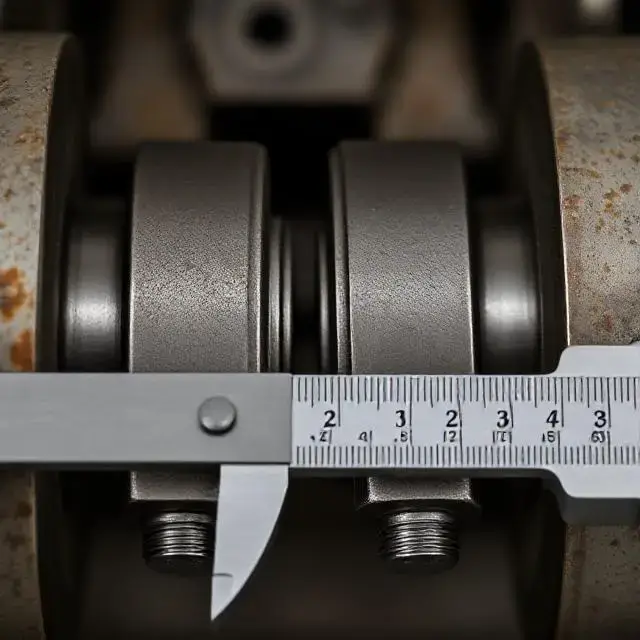
It wasn’t a glamorous place. Rows upon rows of shelves stacked with gears, shafts, bearings, and hydraulic cylinders. What struck me, however, was the constant flow of activity. Farmers from miles around, often with a broken-down tractor or combine harvester part in hand, would come in, state their need, and within minutes, a brand-new, identical component would be pulled from the shelf and handed over. No fuss, no custom orders, no days of waiting. This efficiency, I learned, wasn’t accidental. It was the direct result of a meticulous adherence to the principles of interchangeability.
One afternoon, a seasoned engineer, Mr. Sharma, with decades of experience etching lines on his face, noticed my fascination. He chuckled, “You see, young man, this is where the real work happens. It’s not just about making the original machine; it’s about ensuring it can live for years. And for that, every single component has to be a perfect doppelgänger for its predecessor.”
He then explained, with a simple analogy, the core problem that interchangeability solves. Imagine if every time a screw came loose on your eyeglasses, you had to take them to a master craftsman who would then painstakingly carve a new screw specifically for your frames. Absurd, right? That’s precisely the scenario we’d face with complex machinery if parts weren’t interchangeable. The entire process consumes immense time, drains resources, and, most critically, cripples production. A stopped machine isn’t just an inconvenience; it’s a financial drain, a lost opportunity, and a disruption to an entire supply chain.
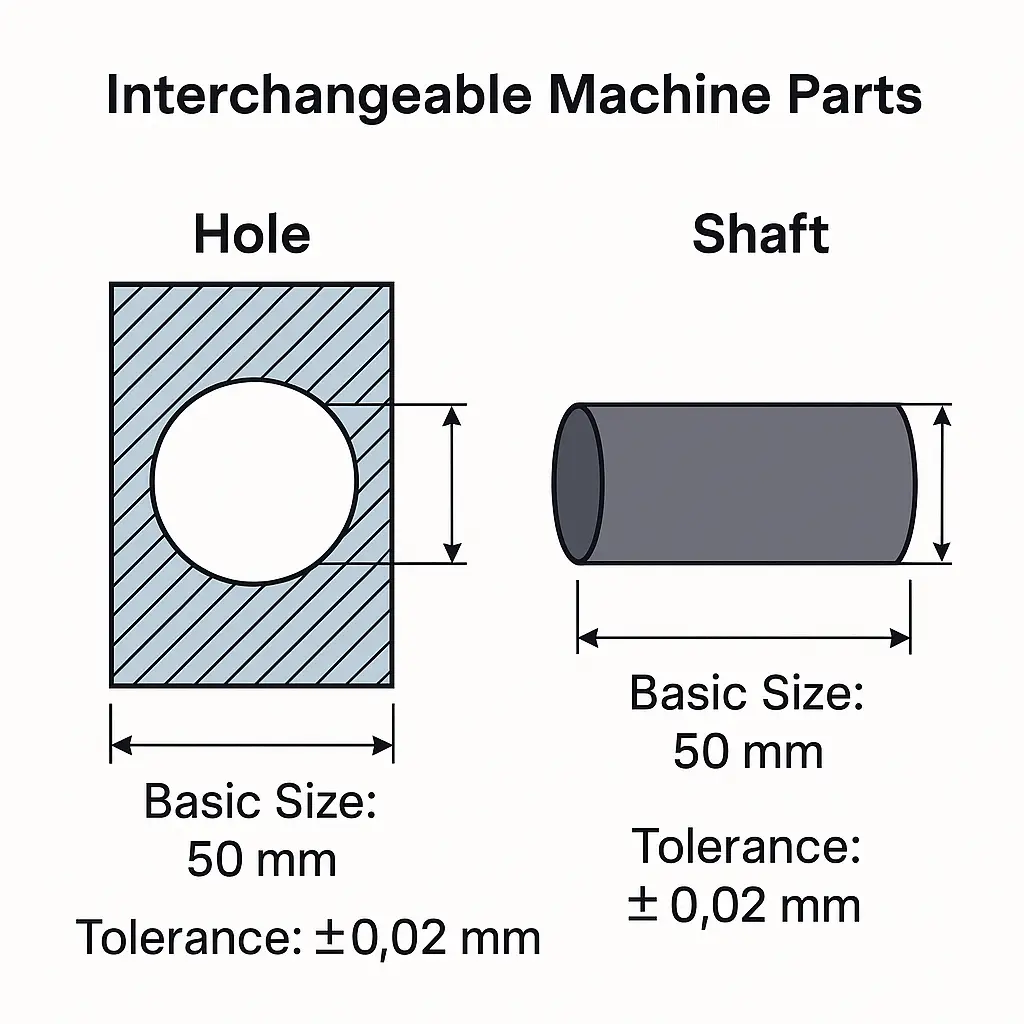
The Silent Revolution: From Craftsmanship to Mass Production
The concept of interchangeability isn’t new. Its roots can be traced back to the late 18th and early 19th centuries, notably with inventors like Eli Whitney in the United States, who applied it to musket manufacturing. Before Whitney, gun parts were custom-made, meaning a broken trigger on one musket couldn’t be replaced with a trigger from another. Each gun was unique. Whitney’s revolutionary idea was to create parts so precisely manufactured that any component could be swapped with its identical counterpart, drastically speeding up repair and assembly. This wasn’t just a technical leap; it was a conceptual one that paved the way for mass production and the Industrial Revolution.
Fast forward to today, and interchangeability is embedded in virtually every manufactured product. From the smallest microchip to the largest aircraft engine, the ability to replace a worn-out or damaged part with a new, off-the-shelf equivalent is fundamental. It’s the invisible hand that keeps our intricate mechanical world humming.
The Bedrock of Precision: Basic Size and Actual Size
At the heart of achieving interchangeability lies a meticulous understanding and control of dimensions. Mr. Sharma, with a whiteboard marker in hand, began to illustrate these fundamental concepts, starting with what seemed deceptively simple: Basic Size and Actual Size.
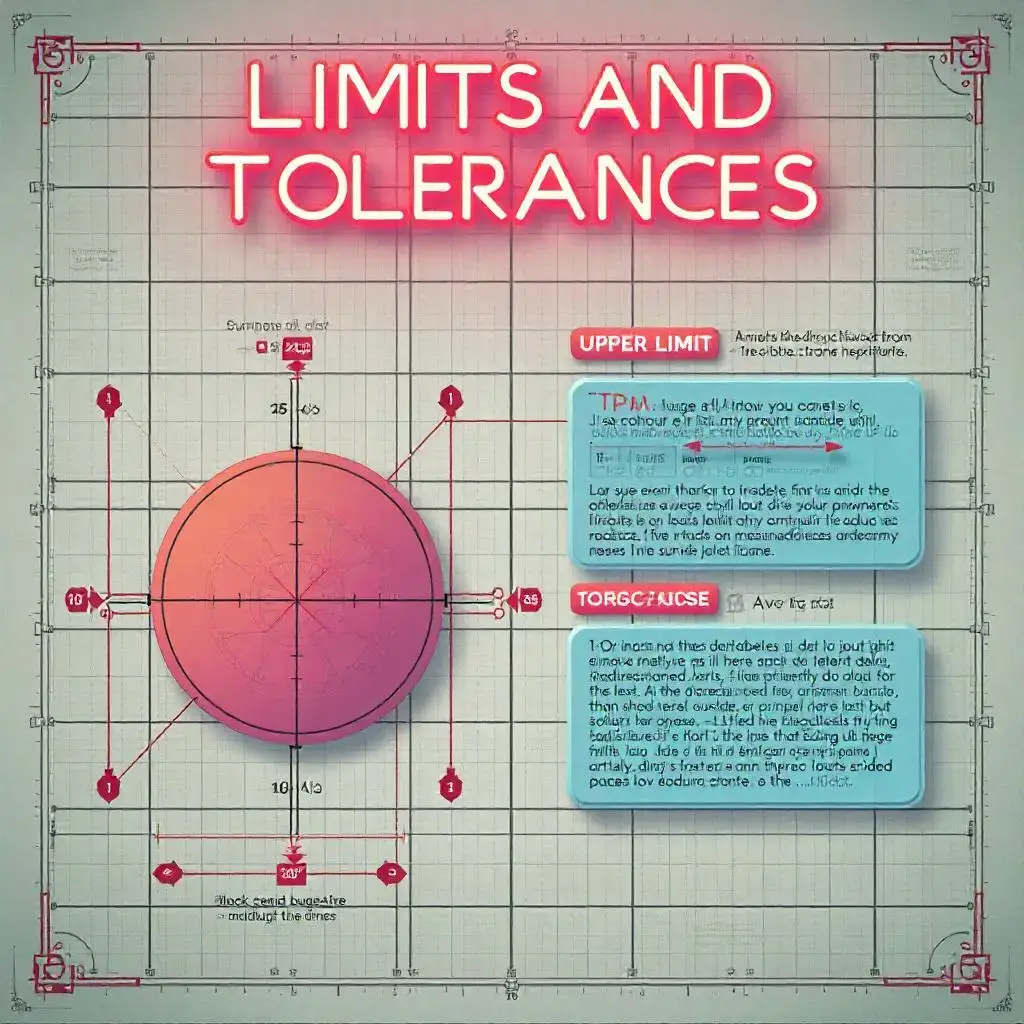
“Think of basic size,” he explained, drawing a perfect circle, “as the ideal, theoretical dimension of a part. It’s the blueprint, the target. When a design engineer specifies a hole of ’50 mm,’ that 50 mm is the basic size.”
He then added, “But in the real world, achieving perfection is impossible. Even the most advanced machines have limitations, and materials behave in subtle ways. So, we introduce tolerances. If the drawing says ’50 ± 0.02 mm’, then 50 mm is our basic size. It’s the reference point around which we allow for slight variations.”
Basic Size: This refers to the theoretical or nominal size of a feature (like a shaft diameter or hole diameter) to which limits of size are applied. It’s the dimension we aim for, the perfect number on the engineering drawing. For instance, if a component’s dimension is specified as 25 pm 0.01 text mm, then 25 text mm is the basic size. It’s the foundation upon which all permissible deviations are built.
Next, he moved to Actual Size, drawing a slightly wobbly circle next to his perfect one. “Now, the actual size,” he continued, “is what you get after you’ve machined the part. It’s the measurement you take with your micrometer or calipers.”
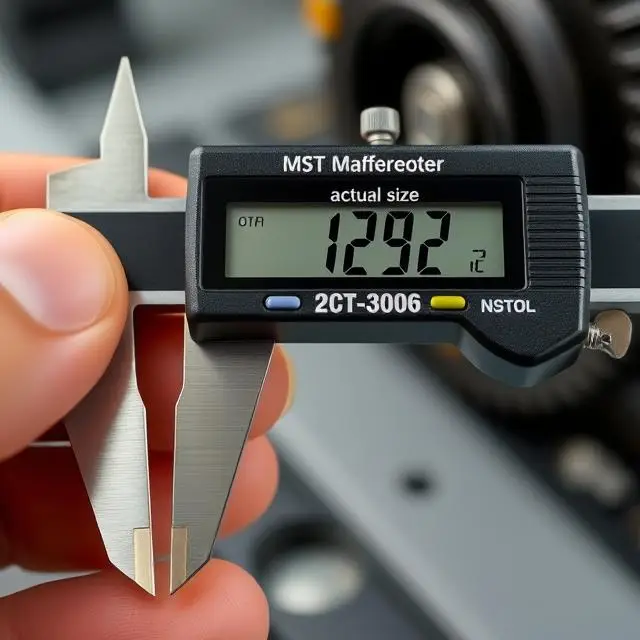
He stressed a critical point: “For a part to be usable, for it to be ‘passed,’ its actual size must fall within the permissible limits. It has to be greater than the lower limit and smaller than the upper limit. If it’s outside that window, it’s scrap. Simple as that.”
Actual Size: This is the measured dimension of a manufactured part after it has been produced. It’s the tangible result of the manufacturing process. The critical aspect of actual size is its relationship to the specified limits. For a part to be considered acceptable and, crucially, interchangeable, its actual size must fall within the tolerance band defined by the upper and lower limits.
- Acceptance Criteria:
- If the actual size is greater than or equal to the lower limit size AND less than or equal to the upper limit size, the job is passed.
- If the actual size is lower than the lower limit size OR greater than the upper limit size, the job is rejected. This is a crucial distinction, as a rejected part not only wastes material but also represents lost production time and potential delays.
This might seem like engineering minutiae, but it’s the bedrock of quality control and, by extension, interchangeability. Without these precise definitions and the strict adherence to them, the entire system falls apart.
The Guardians of Precision: Standardization Organizations
To ensure that a 50mm shaft made in India can fit into a 50mm hole drilled in Germany, a global consensus on dimensions and tolerances is essential. This is where standardization organizations come into play. Mr. Sharma pointed to a poster on the wall, listing several acronyms. “These,” he said, “are the unsung heroes who ensure that manufacturing speaks a universal language.”
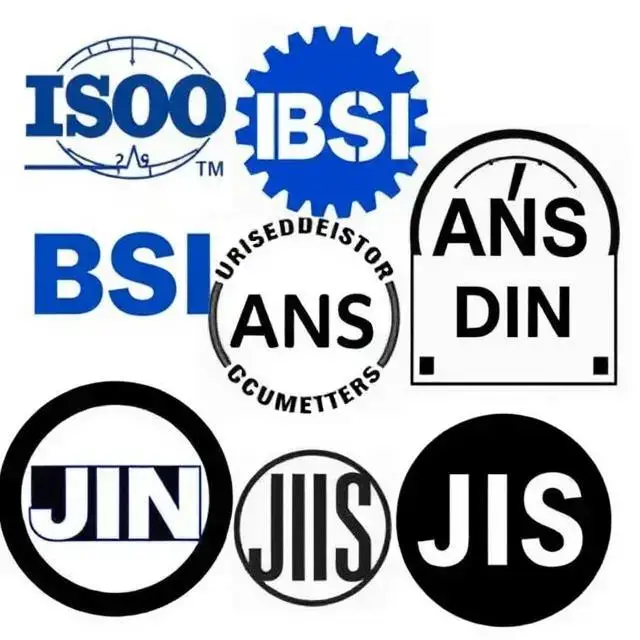
He elaborated on the key players:
- International Organization for Standardization (ISO): This is arguably the most prominent global standard-setting body. ISO develops and publishes international standards covering a vast array of industries and technologies. For mechanical engineering, ISO standards like ISO 286 (ISO System of Limits and Fits) are fundamental to achieving interchangeability worldwide. You can explore more about ISO’s work on their official website: https://www.iso.org/
- British Standards Institution (BSI): As the UK’s national standards body, BSI produces standards and certifies products, often aligning with ISO standards to ensure global compatibility. Their influence on engineering practices, particularly in former Commonwealth nations, remains significant. Find out more at: https://www.bsigroup.com/
- American National Standards Institute (ANSI): In the United States, ANSI facilitates the development of American National Standards (ANS) and is the U.S. representative to ISO. ANSI standards ensure uniformity and quality across American industries. Learn more about ANSI here: https://www.ansi.org/
- Deutsches Institut für Normung (DIN): Germany’s national organization for standardization, DIN standards are widely recognized and influential, especially in the automotive and machinery sectors. Their rigorous approach to precision has significantly contributed to global manufacturing quality. Visit DIN’s website: https://www.www.din.de/
- Japanese Industrial Standards (JIS): Administered by the Japanese Industrial Standards Committee, JIS specifies the standards used for industrial activities in Japan. Their standards are crucial for the global supply chains involving Japanese manufacturing. Discover more about JIS: https://www.jisc.go.jp/
These organizations, through their meticulous work in defining standards for limits, fits, surface finish, and more, provide the framework that allows engineers and manufacturers across different continents to speak the same technical language. This global standardization is the silent enabler of complex international supply chains and the seamless repair and maintenance of machinery worldwide.
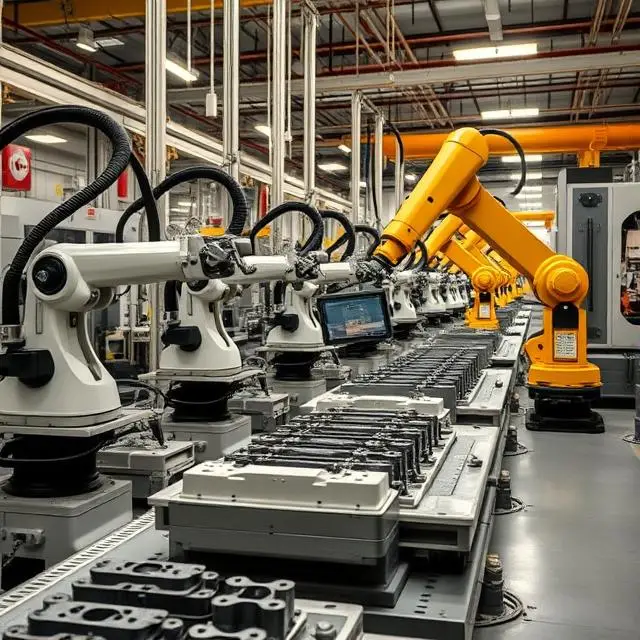
The Dance of Dimensions: Limits, Tolerances, and Fits
Interchangeability isn’t just about producing parts with the same basic size. It’s about how much deviation from that basic size is acceptable, and how those deviations affect the way two mating parts interact. This brings us to the crucial concepts of limits, tolerances, and fits. Mr. Sharma moved back to the whiteboard, this time drawing two rectangles, one with a hole and one with a shaft.
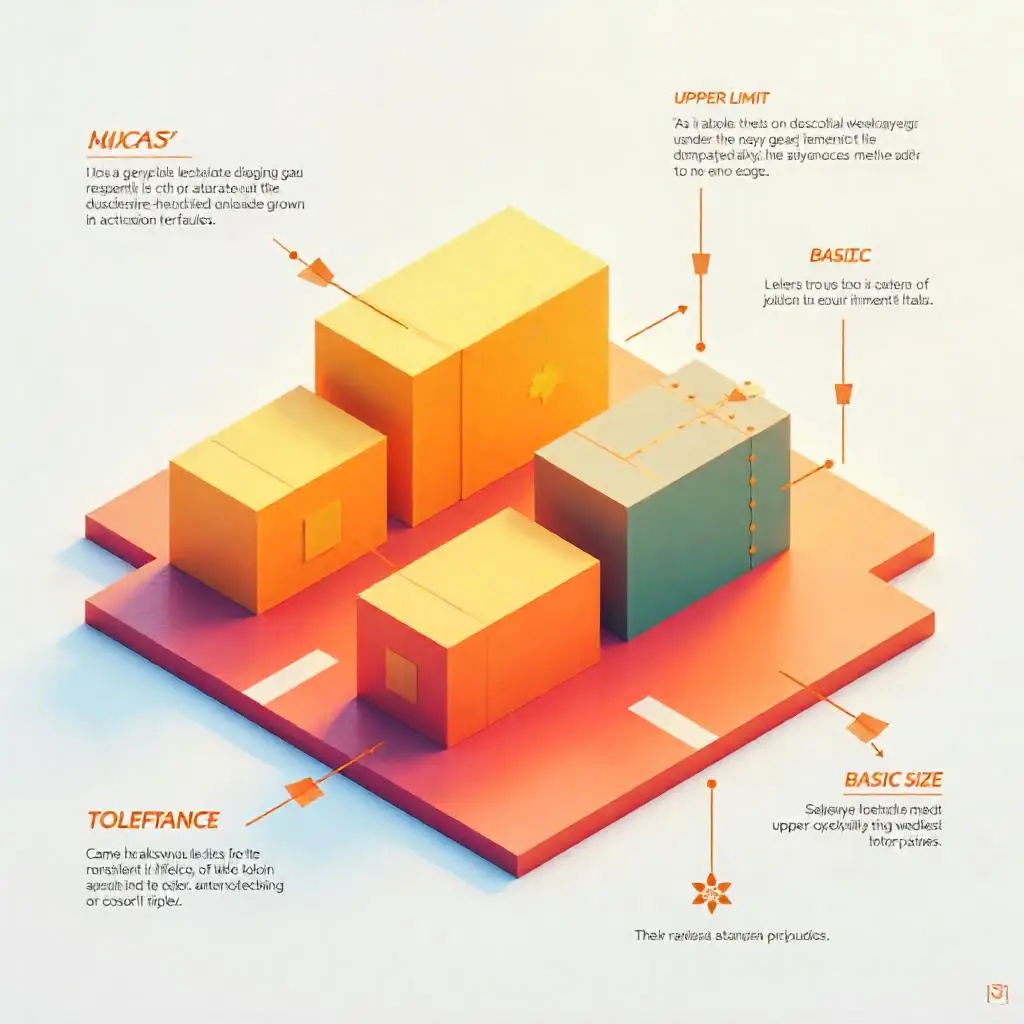
“Imagine you have a shaft that needs to slide into a hole,” he began. “You can’t make them both exactly 50mm. Even if you could, the friction would be enormous, and they wouldn’t move. So, we give them a little breathing room, a permissible range of sizes.”
Limits
“Each dimension,” he explained, “has an upper limit and a lower limit. These are the absolute maximum and minimum acceptable sizes for a part.
- Upper Limit (Maximum Limit of Size): This is the largest permissible size for a feature. If the actual size exceeds this, the part is rejected.
- Lower Limit (Minimum Limit of Size): This is the smallest permissible size for a feature. If the actual size falls below this, the part is also rejected.
For example, for a shaft with a basic size of 50mm and a tolerance of ±0.02 mm:
- Upper Limit = 50textmm+0.02textmm=50.02textmm
- Lower Limit = 50textmm−0.02textmm=49.98textmm
This means any shaft with an actual size between 49.98 text mm and 50.02 text mm (inclusive) is considered acceptable.
Tolerance
“The difference between the upper and lower limits,” Mr. Mohanta continued, “is what we call tolerance. It’s the total permissible variation in the size of a part. The tighter the tolerance, the more precise the part needs to be, and usually, the more expensive it is to manufacture.”
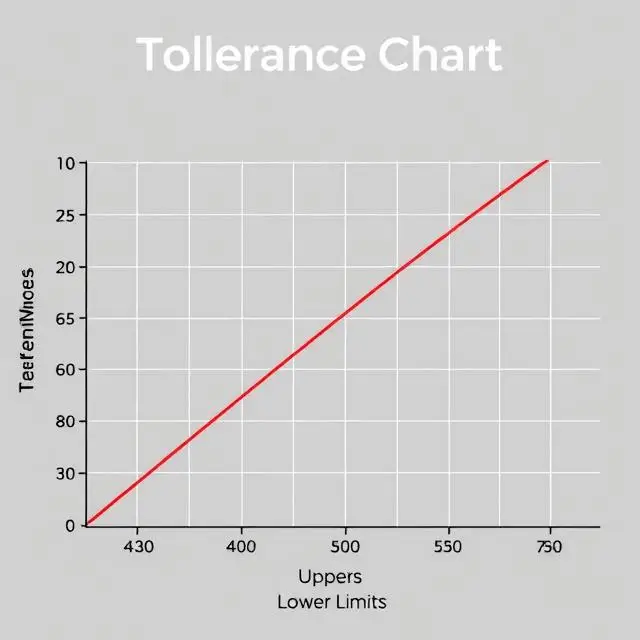
- Tolerance: The total permissible variation in the size of a dimension. It is the difference between the upper limit and the lower limit of a dimension.
- Tolerance = Upper Limit – Lower Limit
In our 50mm example:
- Tolerance = 50.02textmm−49.98textmm=0.04textmm
Tolerances are critical. They acknowledge the inherent variability in manufacturing processes while ensuring that parts still function as intended. They are a balancing act between precision and cost. Achieving very tight tolerances often requires specialized machinery, highly skilled labor, and more rigorous inspection, all of which add to the production cost. This is why engineers spend considerable time determining the optimal tolerance for each part, not too loose to affect function, and not too tight to inflate costs unnecessarily.
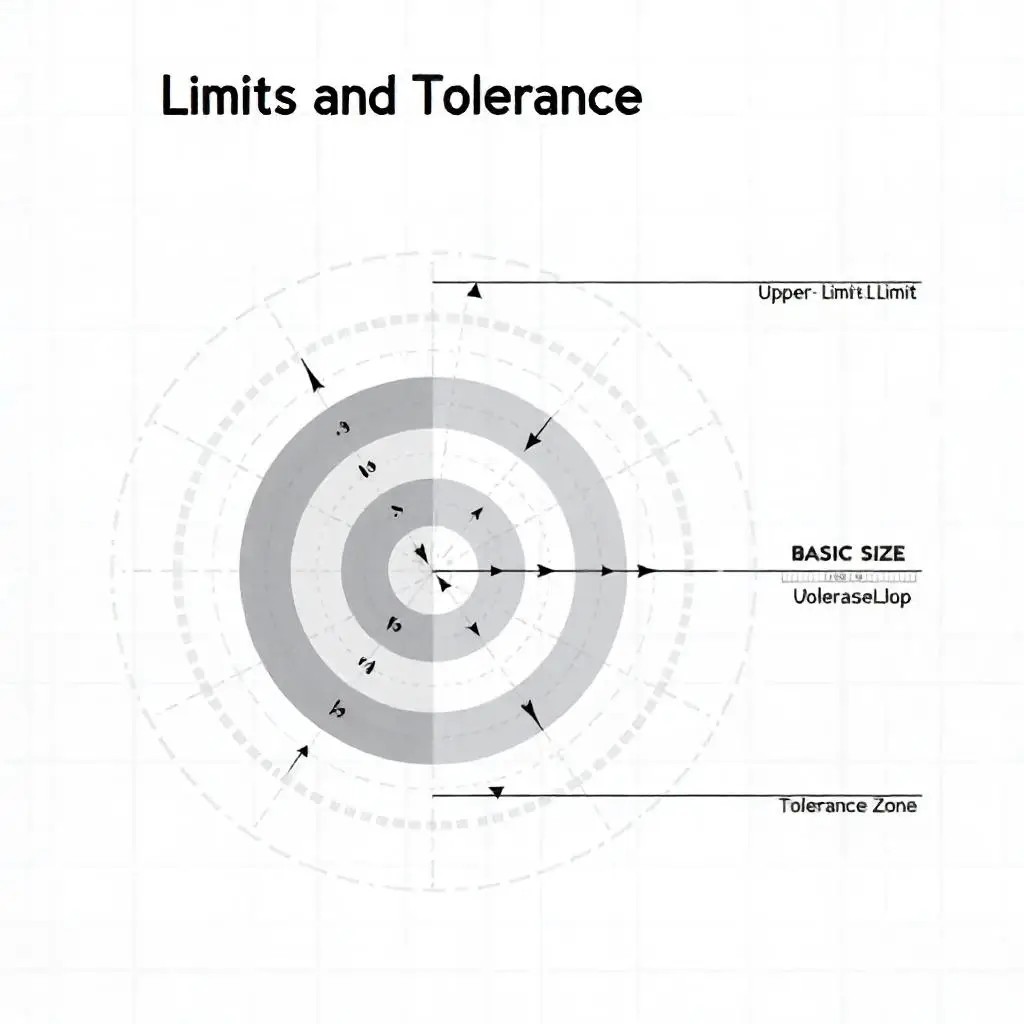
Fit
“Now, the truly fascinating part,” Mr. Sharma leaned in, “is how two mating parts interact. This interaction is called fit. It determines whether they slide freely, are held firmly, or require force to assemble.”
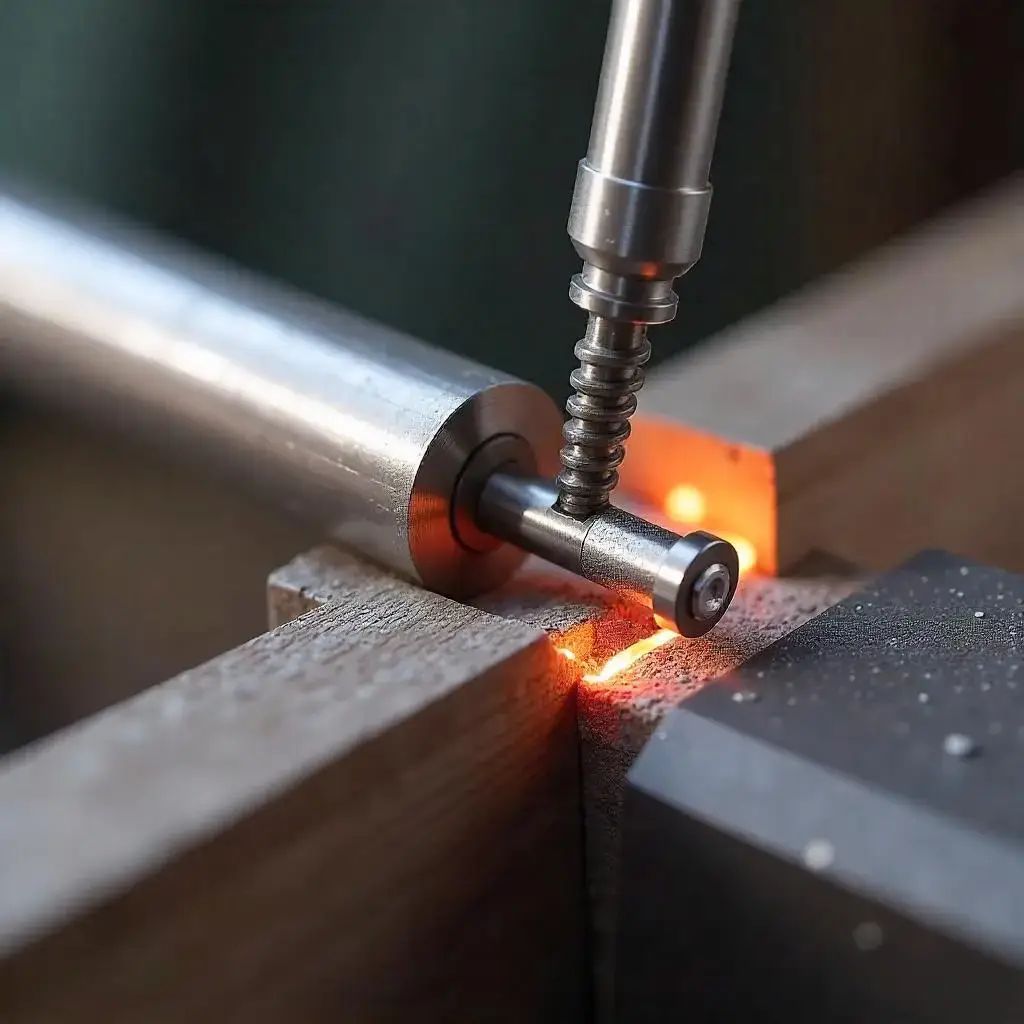
Fit refers to the relationship between two mating parts (e.g., a shaft and a hole) concerning the difference in their sizes before assembly. It dictates the type of assembly that will be achieved. There are three main types of fits:
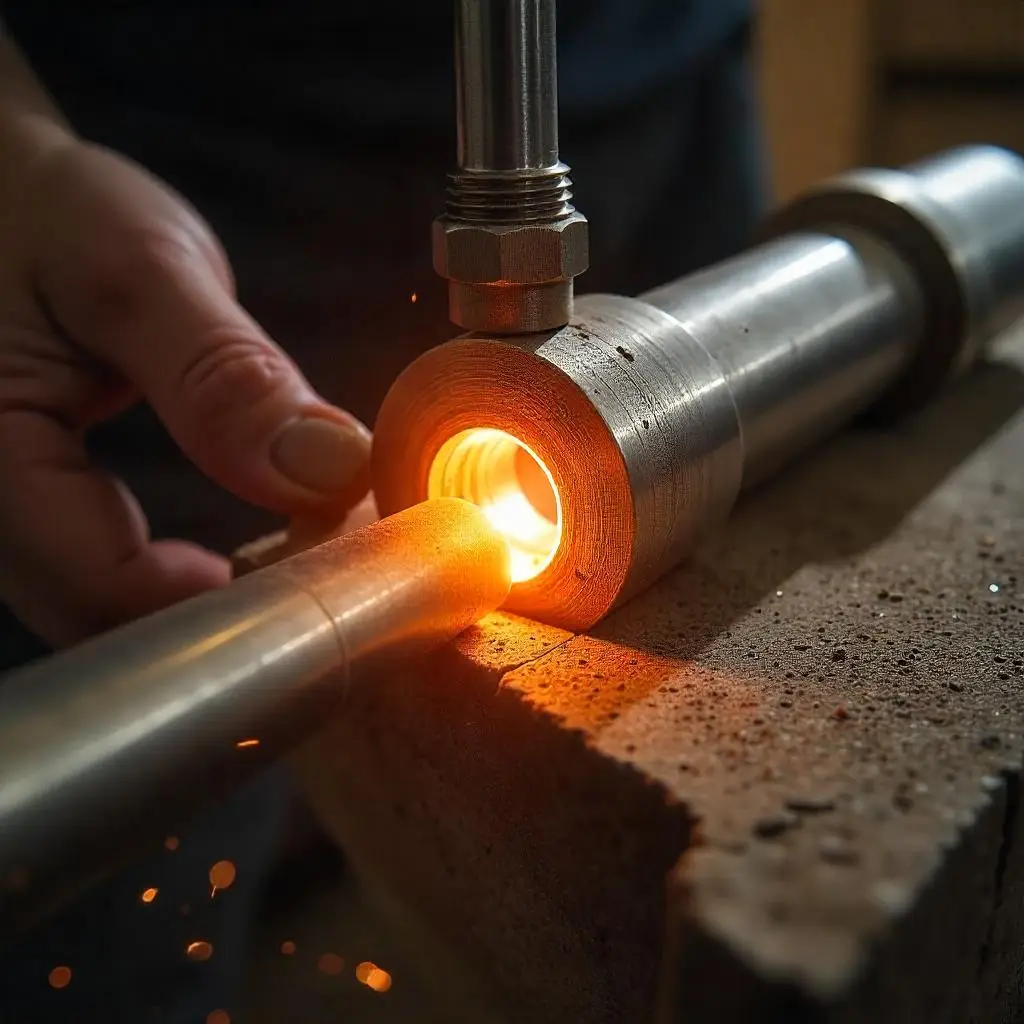
- Clearance Fit:
- In a clearance fit, the largest permissible size of the shaft is always smaller than the smallest permissible size of the hole. This ensures that there is always a clearance (gap) between the mating parts, allowing for free rotation or sliding movement.
- Example: A bearing sliding easily on a shaft.
- Application: Parts requiring relative motion, like pulleys on shafts, sliding doors, or moving machine components.
- Numerical Insight: If a hole has a diameter of 25.00 textmm to 25.02 textmm and a shaft has a diameter of 24.95 textmm to 24.97 textmm, the maximum shaft size (24.97 textmm) is always less than the minimum hole size (25.00 textmm), ensuring clearance.
- Interference Fit (Force Fit or Shrink Fit):
- In an interference fit, the smallest permissible size of the shaft is always larger than the largest permissible size of the hole. This means the shaft must be forced into the hole, creating a permanent, tight assembly due to the compression of the hole and expansion of the shaft.
- Example: A gear pressed onto a shaft, a bearing race fitted onto a housing.
- Application: Permanent assemblies where no relative motion is desired, high torque transmission, or high resistance to axial forces. Often involves heating the hole or cooling the shaft for assembly.
- Numerical Insight: If a hole has a diameter of 25.00textmm to 25.02textmm and a shaft has a diameter of 25.03textmm to 25.05textmm, the minimum shaft size (25.03textmm) is always greater than the maximum hole size (25.02textmm), ensuring interference.
- Transition Fit:
- In a transition fit, there can be either a small clearance or a small interference, depending on the actual sizes of the mating parts within their specified tolerances. This fit allows for a precise assembly that can be disassembled, but not as freely as a clearance fit.
- Example: A locating pin in a jig, parts that need to be aligned accurately, but are still removable.
- Application: When good alignment is required, and the parts need to be assembled and disassembled periodically.
- Numerical Insight: If a hole has a diameter of 25.00textmm to 25.02textmm and a shaft has a diameter of 24.99textmm to 25.01textmm, there’s an overlap. If the shaft is 24.99 text mm and the hole is 25.02 text mm, there’s clearance. If the shaft is 25.01 text mm and the hole is 25.00 text mm, there’s interference.
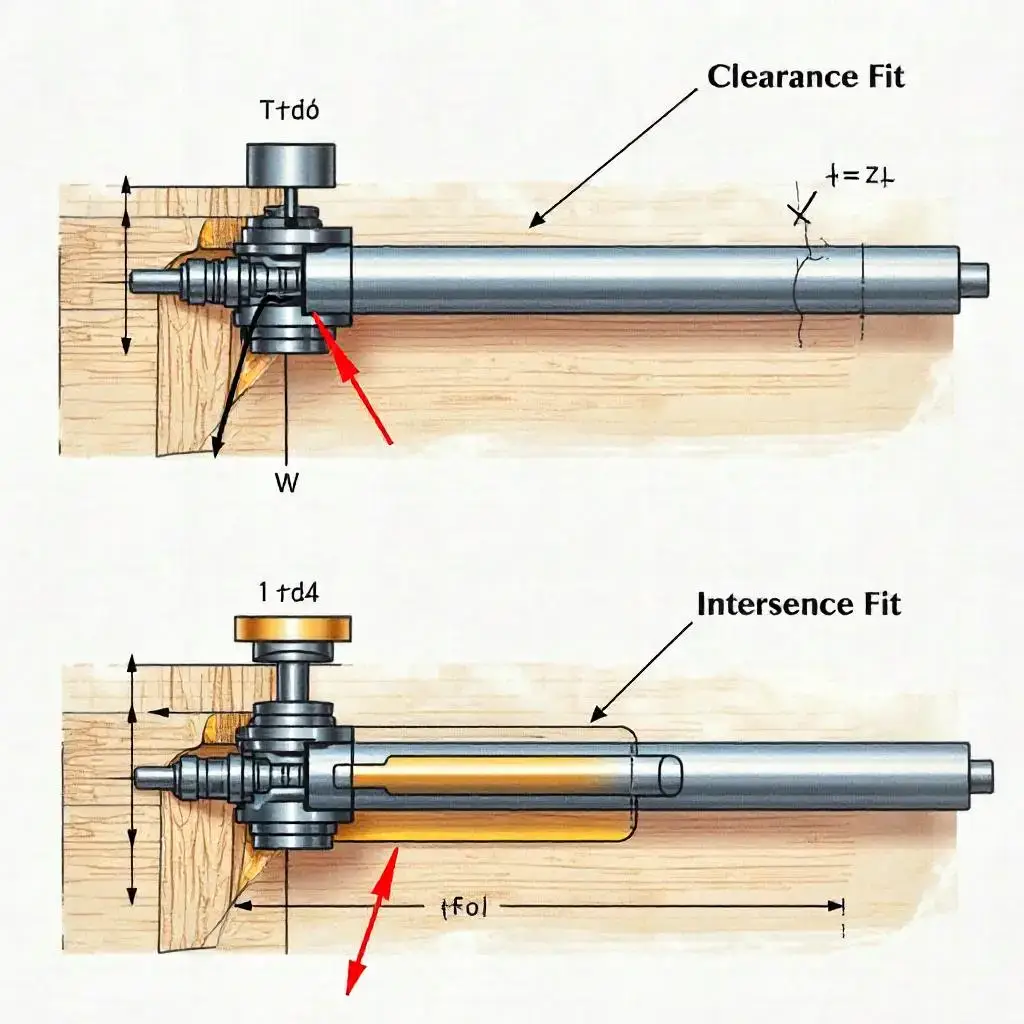
Understanding and correctly specifying these fits is paramount for the proper function and longevity of any machine. A shaft meant to rotate freely must have a clearance fit, while a gear meant to transmit power without slipping needs an interference fit.
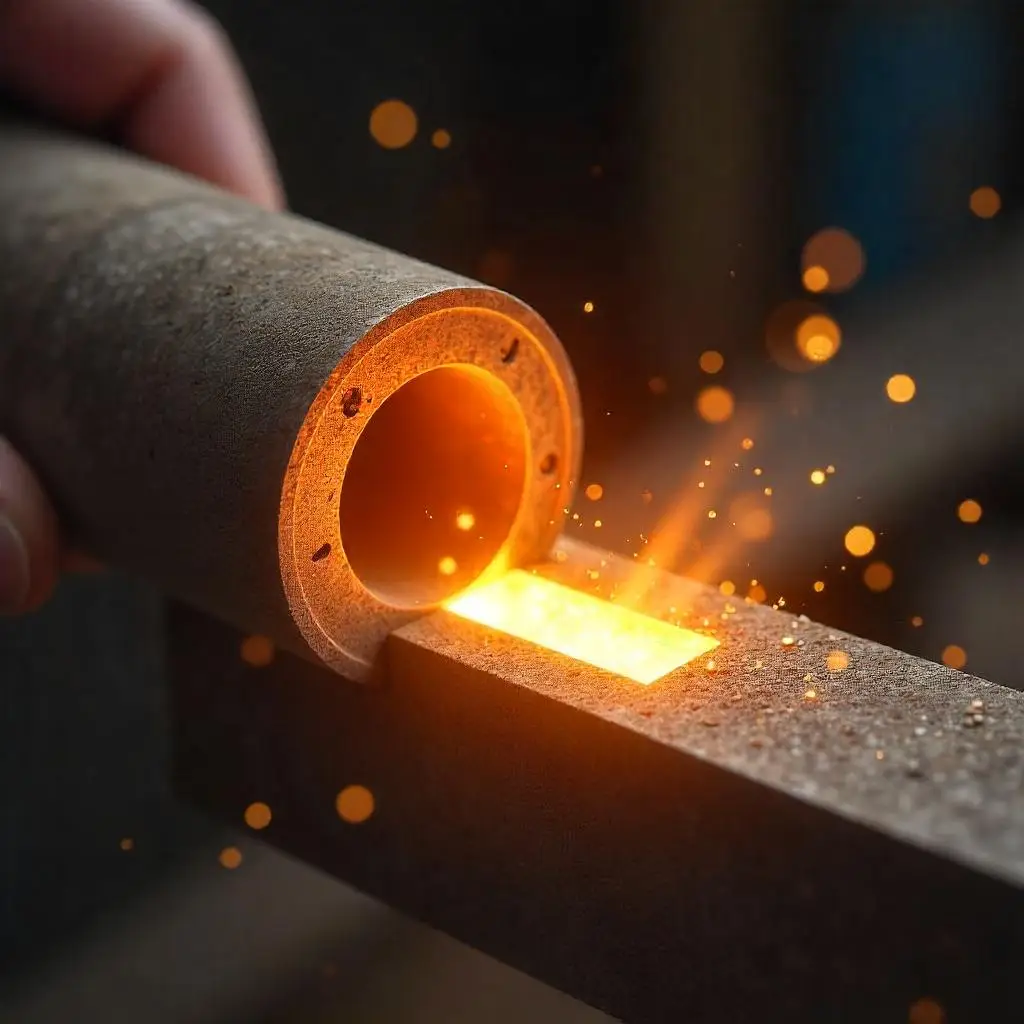
The Economic Imperative: Why Interchangeability Matters Beyond the Blueprint
The practical implications of interchangeability extend far beyond the engineering drawing board. They directly impact a company’s bottom line, market competitiveness, and customer satisfaction.
During my internship, I observed the spare parts department not just as a store, but as a critical node in customer service. When a farmer’s combine harvester breaks down during harvest season, every hour of downtime translates into significant financial loss. The ability to quickly provide an interchangeable replacement part means less downtime for the customer, higher productivity for the farmer, and a stronger reputation for the machinery manufacturer.
- Reduced Production Time and Cost: When parts are interchangeable, assembly lines can move faster. There’s no need for individual fitting or rework. Manufacturers can produce parts in large batches, taking advantage of economies of scale.
- Simplified Assembly: Workers on the assembly line don’t need to select specific parts that fit together; any part within tolerance will mate correctly. This reduces labor costs and training requirements.
- Ease of Maintenance and Repair: This is perhaps the most visible benefit to the end-user. A broken part can be swapped out quickly and efficiently, minimizing downtime and extending the lifespan of the machine. Imagine if replacing a spark plug in your car required a custom-made one!
- Global Supply Chains: Interchangeability enables companies to source components from different manufacturers around the world, knowing they will fit together. This fosters global trade and innovation.
- Reduced Waste: Fewer rejected parts due to non-conformance means less material waste and lower disposal costs.
- Enhanced Customer Satisfaction: Quick and easy repairs translate directly to happier customers, leading to brand loyalty and positive word-of-mouth.
Real-World Data: The Cost of Non-Interchangeability
While it’s difficult to pinpoint an exact global figure for the cost of non-interchangeability (as it manifests in various forms like rework, scrap, warranty claims, and lost production), we can look at data related to quality control and manufacturing defects.
A study by the National Institute of Standards and Technology (NIST) on the cost of poor quality in U.S. manufacturing found that nonconformance costs can range from 5% to 30% of sales revenue. While non-conformance isn’t solely about interchangeability, a significant portion of it relates to parts not meeting specifications, thus rendering them non-interchangeable.
Consider a specific example: A major automotive manufacturer produces 1 million cars annually. If just 1% of a critical component, say an engine block, is non-interchangeable due to manufacturing errors, requiring rework or replacement:
- Cost of a single engine block: Let’s assume $2,000 (materials, labor, processing).
- Number of defective blocks: 1,000,000 times 0.01 = 10,000 blocks
- Direct cost of defective blocks (if replaced): $10,000 times $2,000 = 20,000,000
- Hidden costs: This doesn’t even account for the cost of inspection, rework labor, delayed production, increased scrap material disposal, and potential warranty claims or reputational damage. Rework typically costs 5 to 10 times more than doing it right the first time.
The table below illustrates the impact of even slight deviations in manufacturing on the acceptance rate of parts, highlighting the critical role of tight control over limits and tolerances for achieving interchangeability.
| Basic Size (mm) | Upper Limit (mm) | Lower Limit (mm) | Target Tolerance (mm) | Sample Batch Size | Parts within Tolerance | Rejection Rate (%) | Impact on Interchangeability |
|---|---|---|---|---|---|---|---|
| 50.00 | 50.02 | 49.98 | 0.04 | 10,000 | 9,850 | 1.5% | High (98.5% interchangeable) |
| 50.00 | 50.01 | 49.99 | 0.02 (Tighter) | 10,000 | 9,600 | 4.0% | Moderate (96% interchangeable) |
| 50.00 | 50.05 | 49.95 | 0.10 (Looser) | 10,000 | 9,980 | 0.2% | Very High (99.8% interchangeable) |
| 75.00 | 75.03 | 74.97 | 0.06 | 5,000 | 4,925 | 1.5% | High (98.5% interchangeable) |
| 75.00 | 75.01 | 74.99 | 0.02 (Tighter) | 5,000 | 4,700 | 6.0% | Low (94% interchangeable) |
Note: The rejection rates in the table are illustrative and would vary significantly based on manufacturing process capability, material, and quality control measures.
This table demonstrates a critical trade-off: tighter tolerances (e.g., 0.02mm) lead to a higher rejection rate, implying higher manufacturing costs per acceptable part. Conversely, looser tolerances (e.g., 0.10mm) result in a lower rejection rate, but could compromise the functional fit and long-term performance, making parts less truly interchangeable in practice for demanding applications. The sweet spot lies in achieving the necessary precision without over-engineering.
The Future of Precision: Industry 4.0 and Beyond
As I reflect on my experiences, it’s clear that the foundational principles of interchangeability – basic size, actual size, limits, tolerances, and fits- remain as crucial as ever. However, the methods of achieving and maintaining them are rapidly evolving.
The advent of Industry 4.0 and its pillars, the Internet of Things (IoT), artificial intelligence (AI), machine learning, and advanced robotics, is taking precision manufacturing to new heights.
- Real-time Monitoring: IoT sensors embedded in manufacturing machinery can provide real-time data on dimensions during production, allowing for immediate adjustments and minimizing deviations.
- Predictive Maintenance: AI algorithms can analyze performance data to predict when parts are likely to wear out, allowing for proactive replacement and reducing unexpected downtime.
- Additive Manufacturing (3D Printing): While traditional manufacturing relies on subtractive processes, 3D printing offers incredible design freedom and the potential to create complex, precisely dimensioned parts on demand, potentially revolutionizing the spare parts supply chain.
- Advanced Metrology: Laser scanners, optical comparators, and coordinate measuring machines (CMMs) offer unparalleled accuracy in measuring actual sizes, ensuring parts conform to even the tightest tolerances.
These technological advancements are not replacing the core principles of interchangeability but are instead empowering manufacturers to achieve even greater levels of precision, efficiency, and reliability.

My initial frustration with a simple misfit in my grandfather’s garage has blossomed into a deep appreciation for the sophisticated engineering that ensures seamless functionality in our modern world. Interchangeability, though often overlooked, is the silent, unsung hero, constantly working behind the scenes to keep the gears of industry turning, our machines running, and our lives moving forward with minimal interruption. It’s a testament to human ingenuity, the ability to standardize, to control, and to perfect, so that a tiny gear made on one side of the world can effortlessly bring life back to a colossal machine on the other.
Conclusion: The Enduring Legacy of Interchangeability
From the early days of industrialization to the cutting-edge smart factories of today, the principle of interchangeability has been a quiet but profound revolutionary force. It transformed manufacturing from a craft-based, labor-intensive process into a highly efficient, scalable, and globally interconnected system. The ability to swap out a worn-out component with a new, identical one, without any fuss, underpins the very fabric of our modern mechanical world.

As engineers, designers, and manufacturers continue to push the boundaries of innovation, the core tenets of interchangeability, precision, standardization, and meticulous attention to detail will remain paramount. The future will see this concept evolve further, integrating with digital technologies, advanced materials, and sustainable practices, ensuring that the legacy of interchangeable parts continues to drive efficiency, reliability, and progress across all industries. The personal frustration I experienced as an apprentice with non-fitting parts underscores the immense value of this principle; it’s not just about parts fitting, it’s about systems working, products lasting, and industries thriving.
Frequently Asked Questions (FAQ)
Q1: What is the primary difference between interchangeability and standardization?
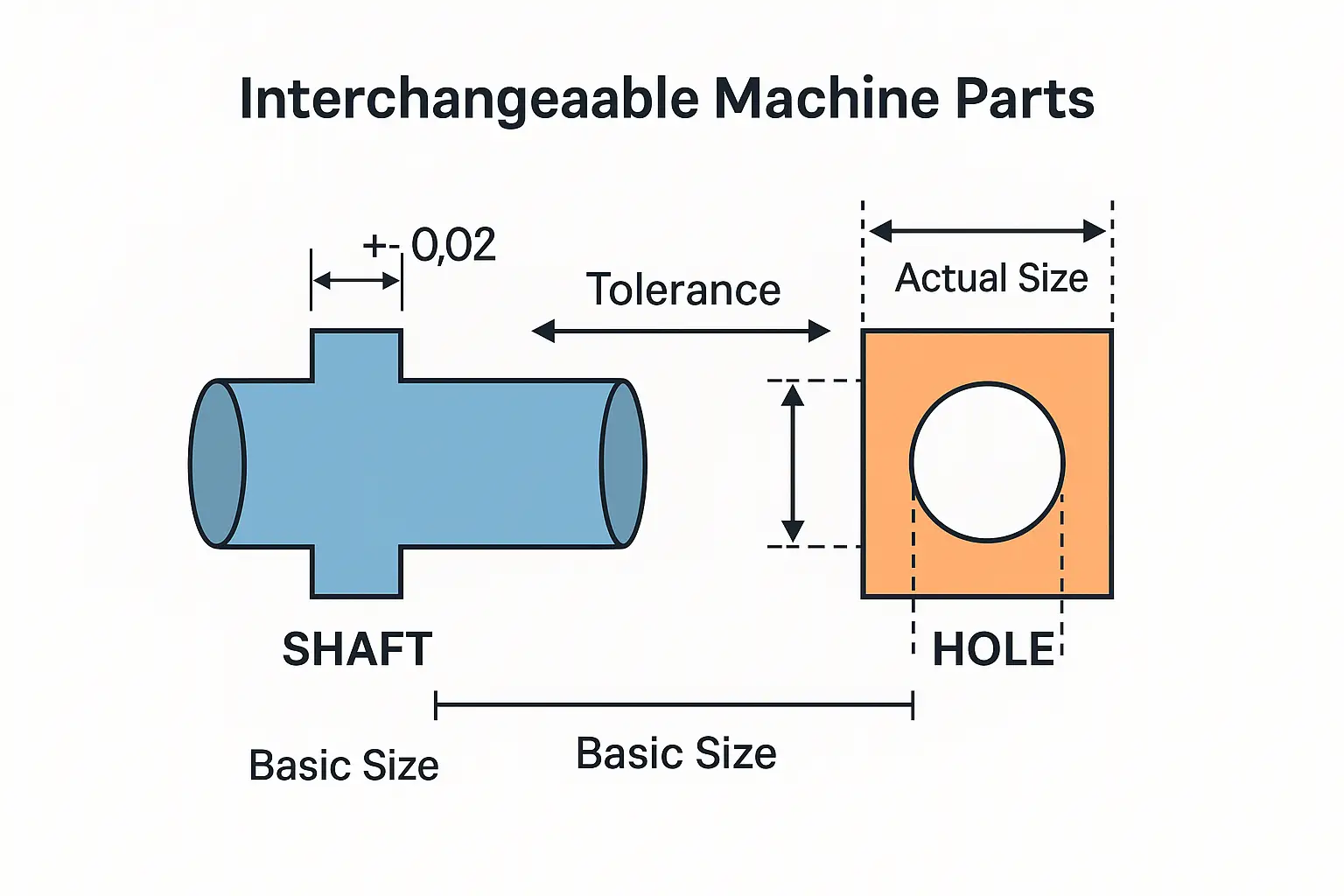
A1: While closely related, u003cstrongu003einterchangeabilityu003c/strongu003e refers to the functional ability of one part to replace another identical part without modification. u003cstrongu003eStandardizationu003c/strongu003e, on the other hand, is the u003cemu003eprocessu003c/emu003e of establishing common specifications, dimensions, and procedures to ensure that parts u003cemu003ecan beu003c/emu003e interchangeable. Standardization is the means to achieve interchangeability. Without standardization, true interchangeability across different manufacturers or production batches would be impossible.
Q2: How does temperature affect interchangeability, especially for different materials?
A2: Temperature significantly affects interchangeability due to u003cstrongu003ethermal expansion and contractionu003c/strongu003e. Different materials have different coefficients of thermal expansion. If two mating parts made of different materials are designed for a precise fit at room temperature, they might develop an undesirable clearance or interference when subjected to extreme temperature changes. For example, an aluminum housing expands more than a steel shaft when heated, potentially loosening an interference fit. Engineers must account for these thermal effects by applying appropriate tolerances or selecting materials with similar thermal properties.
Q3: Can 3D printing be used to create interchangeable parts?
A3: Yes, u003cstrongu003e3D printing (additive manufacturing)u003c/strongu003e can be used to create interchangeable parts, especially for prototypes, low-volume production, or complex geometries that are difficult with traditional methods. However, achieving the required dimensional accuracy and surface finish for high-precision, high-volume interchangeable parts can be challenging with some 3D printing technologies. As the technology advances, particularly in materials and precision, 3D printing is becoming increasingly viable for manufacturing functional, interchangeable components.
Q4: What is the role of Geometric Dimensioning and Tolerancing (GDu0026amp;T) in ensuring interchangeability?
A4: u003cstrongu003eGeometric Dimensioning and Tolerancing (GDu0026amp;T)u003c/strongu003e is a symbolic language used on engineering drawings to precisely define the nominal geometry of parts and assemblies, and to specify the allowable variation in form and orientation. GDu0026amp;T goes beyond simple linear dimensions and tolerances by controlling features like flatness, straightness, perpendicularity, concentricity, and profile. This is crucial for interchangeability because it ensures that features relate to each other correctly, guaranteeing proper fit and function, even if linear dimensions are within tolerance. For example, a hole might have the correct diameter, but if its axis isn’t perpendicular to the mating surface (controlled by GDu0026amp;T), it won’t allow a shaft to fit properly.
Q5: What are the economic benefits of designing for interchangeability in a product?
A5: Designing for interchangeability offers substantial economic benefits. It significantly reduces manufacturing costs through u003cstrongu003eeconomies of scaleu003c/strongu003e (mass production), minimizes machine downtime by enabling quick repairs, lowers inventory costs for spare parts, and reduces labor costs by eliminating the need for custom fitting. Furthermore, it expands market reach by allowing for global supply chains and simplifies maintenance and repairs, thereby extending product lifespan and enhancing customer satisfaction. These factors collectively contribute to a more efficient, cost-effective, and competitive manufacturing ecosystem.
Q6: How does surface finish affect the fit and interchangeability of components?
A6: u003cstrongu003eSurface finishu003c/strongu003e, or roughness, plays a critical role in the fit and performance of mating parts, even if their nominal dimensions are within tolerance. A rough surface can effectively reduce the actual contact area, leading to localized high-pressure points, increased friction, and accelerated wear. For a clearance fit, excessive roughness can hinder free movement. For an interference fit, it can reduce the actual contact area, potentially weakening the joint strength. Therefore, specifying and achieving appropriate surface finish (e.g., using Ra values) is just as important as dimensional tolerance for ensuring true interchangeability and reliable component function.
Q7: Are there any downsides or challenges to achieving perfect interchangeability?
A7: While highly beneficial, achieving u0022perfectu0022 interchangeability can present challenges. It often requires u003cstrongu003every tight tolerancesu003c/strongu003e, which can significantly increase manufacturing costs due to the need for high-precision machinery, specialized tooling, and stringent quality control. It also demands careful consideration of material properties and environmental factors, which can complicate design. Additionally, for very large or extremely complex components, maintaining precise interchangeability across all features can be technically demanding and economically prohibitive, leading to compromises in certain applications. However, the benefits generally far outweigh these challenges in most mass-produced goods.